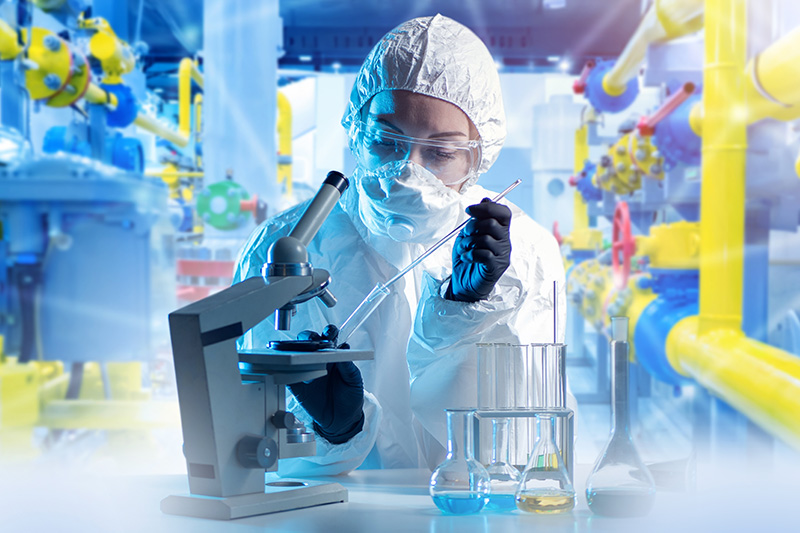PSA is a new type of gas adsorption and separation technology. Under normal temperature conditions, it uses the difference in the adsorption capacity of oxygen and nitrogen on the surface micropores of carbon molecular sieves to achieve the physical air separation method of oxygen-nitrogen separation.
BSN PSA Nitrogen Generator
BSN PSA Nitrogen Generator
Selection Parameter:
Nitrogen Output: 1~3000Nm³/h
Nitrogen Purity: 95%~99.999%
Nitrogen Pressure:0.1~1.15MPa(adjustable)
Nitrogen Dew Point: -20℃~-60℃
Noise: 65~85dB(A)
Customization: Stainless steel, ATEX, ASME, CE
Optional:
Features:
- Low energy consumption, less cost, strong adaptability, rapid nitrogen production, and adjustable purity;
- Convenient operation, stable performance, high automation, and unattended operation;
- Reasonable inner structure and uniform distribution of airflow reduce the high-speed impact of the airflow;
- Unique protection measure for carbon molecular sieve extends the service life of the carbon molecular sieve; Modular structure design saves the occupied area;
- The key parts adopt the famous brand, which is the effective guarantee of the equipment quality;
- The automatic venting device with nationally patented technology ensures the quality of the produced nitrogen;
- It has functions of diagnosis, alarming, and automatic troubleshooting for several failures;
- Touch-screen display, dew point detection, energy-saving control, DCS communication, etc. are optional.
- Complete technique and process design and optimal effect;
- Reduction of Nitrogen costs up to 95%.
- Independence from external gas suppliers and fluctuation of the nitrogen market prices.
- Suppression of logistic operations like handling of cylinders or liquid nitrogen supplier management.
- Modular flexible and low maintenance units.
Factors to Consider Before Choosing
According to the selection rules, help you choose the right nitrogen machine equipment.
Nitrogen Capacity
Confirm the outlet flow rate of the required nitrogen gas.
Generally refers to how much capacity nitrogen gas is needed per hour, in Nm³/h (standard square/hour). Different applications require different nitrogen flow rates, and if the selection is too large, it may cause waste and excessive cost problems. Therefore, selecting the right equipment according to actual needs and uses is necessary.

Nitrogen Purity
Air contains about 78% nitrogen gas. When we use nitrogen, there will be different requirements for purity depending on the application. Generally, we can choose within the range of 95~99.9995%;

Nitrogen Pressure
Under normal configuration, after the nitrogen generator equipment passes through the air compressor, compressed air dryer, multiple precision filters, and oxygen-nitrogen separation machine, the pressure of qualified nitrogen gas can be 0.1~1.15MPa. If high pressure is required due to special processes, you can choose the nitrogen booster.

Nitrogen Dew Point
Dew point refers to the moisture content in a gas. The lower the dew point, the less moisture the gas contains, indicating that the gas is drier. The dew point is related to pressure, with distinctions between atmospheric pressure dew point (ADP) and pressure dew point(PDP). Unless otherwise specified, the dew point referred to is the atmospheric dew point. Generally, when the system is equipped with the refrigerated dryer, the nitrogen produced by the PSA nitrogen generator has a normal pressure dew point of -40°C. For users with lower dew point requirements, an adsorption dryer or a combination dryer can be selected.

Application
The application of nitrogen is also an important factor in selecting nitrogen generator equipment.
For example, in food packing and medicine, it is best to use tend to be oil-free and water-free nitrogen gas; While in the manufacturing of semiconductors and electronic products, high-purity nitrogen gas is needed.

PSA Nitrogen Generator Working Process
1.Pressurized Adsorption
PSA Nitrogen Generator, based on Pressure Swing Adsorption (PSA) technology using state-of-the Art Carbon Molecular Sieve Adsorbents.
Under certain pressure, the difference of diffusion rate between nitrogen and oxygen in the air is quite different on carbon molecular sieves;
the oxygen molecule is absorbed largely by the carbon molecular sieve and the nitrogen molecule concentrates in the gas phase in a short time, to realize separation of oxygen and nitrogen.
2.Depressurization Desorption
Due to that the absorption capacity of carbon molecular sieves for oxygen varies largely from different pressures, reducing the pressure can make the carbon molecular sieves release the absorbed oxygen molecule and regenerate the carbon molecular sieves, to realize repeated recycling of it.
It adopts the technique of two absorption towers, in which one tower absorbs oxygen and produces nitrogen, and another tower releases the absorbed oxygen and regenerates the carbon molecular sieves. This cyclic-alternating pattern can produce high-quality nitrogen continuously.

PSA Nitrogen Generator Selection Table
| Model | Nitrogen Capacity | |||||||
| 97% | 98% | 99% | 99.5% | 99.9% | 99.99% | 99.999% | ||
| BSN-10 | m³/h | 23 | 20 | 17 | 15 | 10 | 6 | 4.7 |
| BSN-15 | m³/h | 34 | 30 | 25 | 22 | 15 | 9 | 7 |
| BSN-20 | m³/h | 46 | 40 | 34 | 30 | 20 | 12 | 9.4 |
| BSN-25 | m³/h | 57 | 50 | 42 | 37 | 25 | 15 | 12 |
| BSN-30 | m³/h | 69 | 60 | 51 | 45 | 30 | 18 | 14 |
| BSN-35 | m³/h | 80 | 70 | 60 | 52 | 35 | 21 | 16.5 |
| BSN-40 | m³/h | 92 | 80 | 68 | 60 | 40 | 24 | 19 |
| BSN-50 | m³/h | 115 | 100 | 85 | 75 | 50 | 30 | 23 |
| BSN-60 | m³/h | 138 | 120 | 102 | 90 | 60 | 36 | 28 |
| BSN-70 | m³/h | 161 | 140 | 119 | 105 | 70 | 42 | 33 |
| BSN-80 | m³/h | 184 | 160 | 136 | 120 | 80 | 48 | 37.6 |
| BSN-90 | m³/h | 207 | 180 | 153 | 135 | 90 | 54 | 42.3 |
| BSN-100 | m³/h | 230 | 200 | 170 | 150 | 100 | 60 | 47 |
| BSN-150 | m³/h | 345 | 300 | 255 | 225 | 150 | 90 | 70.5 |
| BSN-200 | m³/h | 460 | 400 | 340 | 300 | 200 | 120 | 94 |
| BSN-300 | m³/h | 690 | 600 | 510 | 450 | 300 | 180 | 141 |
| BSN-400 | m³/h | 920 | 800 | 680 | 600 | 400 | 240 | 188 |
| BSN-500 | m³/h | 1150 | 1000 | 850 | 750 | 500 | 300 | 235 |
※ Nitrogen production with compressed air input at 7 barg
※ Performance stated at the standard condition: 20℃/101.325KPa
※ Purity values are measured in oxygen Content
※ Refrigeration dryer and activated carbon filter are required
※ Other capacities/purity available on request. Models and specifications are subject to change without notice
Customization Solution

Stand-Alone System
This structural design has the advantages of cost-effectiveness and ease of daily maintenance. All components are placed separately and are suitable for indoor installation. The components can be issued with a 3D visual installation scheme based on site conditions.
All In One Skid Unit
The whole system is mounted on one skid, including pipes, hoses, brackets, electrical connections, sewage connections, etc. This method is suitable for small and medium-sized equipment. It has the advantage of being easy to transport and no need to install it on-site, and the machine can be started and used immediately after plugging in.


Moveable Containerized Unit
The nitrogen supply system is installed in a customized container shell. The shell structure has all the advantages of the skid-mounted structure, in addition to providing options to ensure ideal operating conditions.
The shell also has the functions of rain cover and sunshade. If air conditioning and insulation materials are provided, it will also help maintain a suitable working temperature in the shell and control noise.
Application
ANYTHING YOU COULDN’T FIND?
Talk With Our Sales
BODA focuses on the global market and provides our customers with products suitable for the local market:
- 22+ Years of Industry Production Experience
- 23+ Invention Patents
- 24 Hour Hotline Support
- 56+ Utility Patents
- 2,500+ Customers
- 30000m² Independent Factory Space
- Quick Reply
- Free Online Training
- Equipment Maintenance Service
SEND US AN EMAIL
Contact Us
Whether selecting a product from our catalog or seeking engineering assistance for your application, you can talk to our customer service center about your sourcing requirements.


















